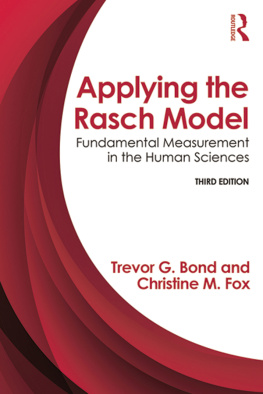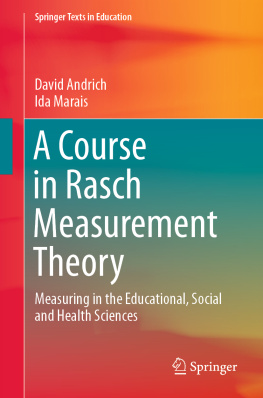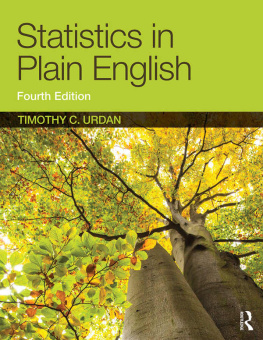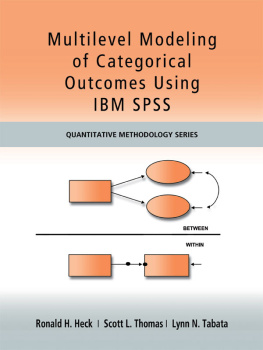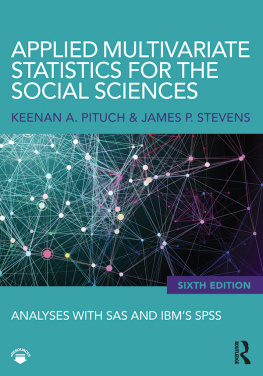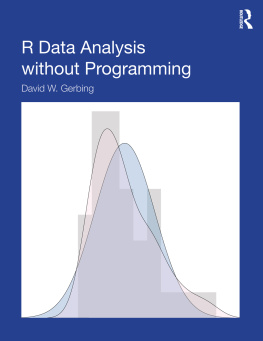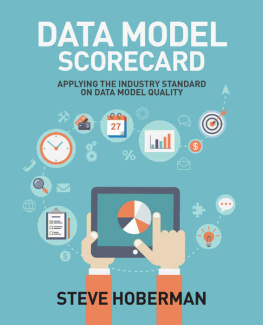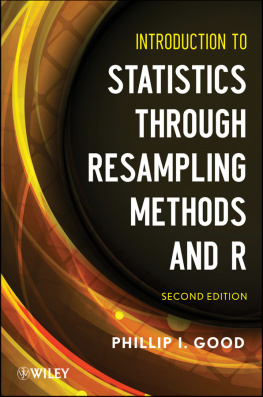Trevor G. Bond - Applying the Rasch Model: Fundamental Measurement in the Human Sciences, Third Edition
Here you can read online Trevor G. Bond - Applying the Rasch Model: Fundamental Measurement in the Human Sciences, Third Edition full text of the book (entire story) in english for free. Download pdf and epub, get meaning, cover and reviews about this ebook. year: 2015, publisher: Routledge, genre: Romance novel. Description of the work, (preface) as well as reviews are available. Best literature library LitArk.com created for fans of good reading and offers a wide selection of genres:
Romance novel
Science fiction
Adventure
Detective
Science
History
Home and family
Prose
Art
Politics
Computer
Non-fiction
Religion
Business
Children
Humor
Choose a favorite category and find really read worthwhile books. Enjoy immersion in the world of imagination, feel the emotions of the characters or learn something new for yourself, make an fascinating discovery.
- Book:Applying the Rasch Model: Fundamental Measurement in the Human Sciences, Third Edition
- Author:
- Publisher:Routledge
- Genre:
- Year:2015
- Rating:4 / 5
- Favourites:Add to favourites
- Your mark:
Applying the Rasch Model: Fundamental Measurement in the Human Sciences, Third Edition: summary, description and annotation
We offer to read an annotation, description, summary or preface (depends on what the author of the book "Applying the Rasch Model: Fundamental Measurement in the Human Sciences, Third Edition" wrote himself). If you haven't found the necessary information about the book — write in the comments, we will try to find it.
Cited over 1900 times, this classic text facilitates a deep understanding of the Rasch model. The authors review the crucial properties of the model and demonstrate its use with a variety of examples from education, psychology, and health. A glossary and numerous illustrations aid the readers understanding. Readers learn how to apply Rasch analysis so they can perform their own analyses and interpret the results. The authors present an accessible overview that does not require a mathematical background.
Highlights of the new edition include:
-More learning tools to strengthen readers understanding including chapter introductions, boldfaced key terms, chapter summaries, activities, and suggested readings.
-Divided chapters (4, 6, 7 & 8) into basic and extended understanding sections so readers can select the level most appropriate for their needs and to provide more in-depth investigations of key topics.
-A website at www.routledge.com/9780415833424 that features free Rasch software, data sets, an Invariance worksheet, detailed instructions for key analyses, and links to related sources.
-Greater emphasis on the role of Rasch measurement as a priori in the construction of scales and its use post hoc to reveal the extent to which interval scale measurement is instantiated in existing data sets.
-Emphasizes the importance of interval level measurement data and demonstrates how Rasch measurement is used to examine measurement invariance.
-Insights from other Rasch scholars via innovative applications (Ch. 9).
-Extended discussion of invariance now reviews DIF, DPF, and anchoring (ch. 5).
-Revised Rating Scale Model material now based on the analysis of the CEAQ (ch.6).
-Clarifies the relationships between Rasch measurement, True Score Theory, and Item Response Theory by reviewing their commonalities and differences (Ch.13).
-Provides more detail on how to conduct a Rasch analysis so readers can use the techniques on their own (Appendix B).
Intended as a text for graduate courses in measurement, item response theory, (advanced) research methods or quantitative analysis taught in psychology, education, human development, business, and other social and health sciences, professionals in these areas also appreciate the books accessible introduction.
Trevor G. Bond: author's other books
Who wrote Applying the Rasch Model: Fundamental Measurement in the Human Sciences, Third Edition? Find out the surname, the name of the author of the book and a list of all author's works by series.

